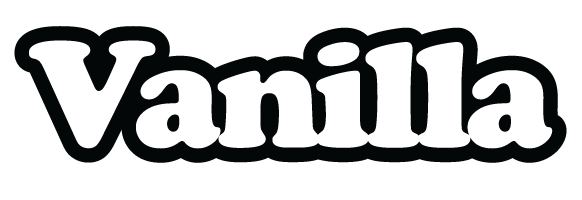Take a quick scroll through your TikTok feed, and you’ll see ‘man-repelling’ outfit guides taking over. High-waisted shorts, bleached eyebrows (thank you, Julia Fox), and socks with Mary Janes or the craziest clogs— looks that reject conventional attractiveness defined by the male gaze—are dominating fashion feeds. But this isn’t just another micro-trend. The resurgence of ‘man-repelling’ dressing is a cultural response to the shifting landscape of gender, identity, and power.
Over the past 10 years, we’ve cycled through logo-heavy maximalism and the polished restraint of quiet luxury—aesthetics that, at their core, were about status and belonging. Maximalism, with its head-to-toe monograms and bold, attention-grabbing aesthetics, signified cultural capital, while quiet luxury thrived on subtlety, signaling exclusivity through understatement. Both trends revolved around external validation—whether through obvious branding or the ability to recognize discreet symbols of wealth. However, as traditional markers of identity and success become more fluid, so does our approach to dressing. Fashion has always been political, which is undeniable, and today’s version of man-repelling is less about irony and more about autonomy. Rather than dressing for perceived social capital, people are using fashion today to assert individuality in ways that actively go against aesthetic expectations.
But let’s go back in time. Back in the early 2010s, Leandra Medine Cohen’s Man Repeller blog turned dressing-for-yourself into a movement and phenomenon. It was a playful rebellion against the idea that women should dress to please men—a celebration of fashion’s over-the-top, weird, eccentric, and intentionally “unsexy” side. Those years marked the birth of street-style looks with oversized silhouettes, clashing prints, and drop-crotch harem pants—clothes that women loved and straight men didn’t understand so “repelled”—became a badge of honor.
But what started as an inside joke about personal style was actually rooted in a much longer history of rejecting the male gaze. From the androgynous flapper looks of the 1920s to the power suits and hyper-femininity of the 1980s (which happen to be having a comeback this Fall Winter 25) and the grunge aesthetic of the 1990s, women and gender-nonconforming individuals have long used fashion to push back against societal expectations. Now, as we navigate a period of growing conservatism, tense politics, and ongoing debates over bodily autonomy, man-repelling dressing feels urgent again.
This resurgence is not happening in a vacuum. Cultural shifts around gender and identity are shaping the way we dress, just as they have in the past decades. Today, younger generations are questioning outdated beauty standards and embracing self-expression in ways that don’t cater to traditional ideas of femininity or masculinity. The rise of gender-fluid fashion during each fashion week reflects a broader rejection of rigid binaries, and the aesthetics of “man-repelling” are a natural extension of that conversation.
Designers are responding to this shift in their own ways. Alessandro Michele’s Valentino FW25 collection reinforced the idea of identity as a performance of self—fluid, curated, and constantly evolving in front of people’s eyes (the reason why his show was presented inside a public bathroom). Prada and Miu Miu continue to redefine femininity on their own terms, stripping away traditional ideas of polish and perfection, so both shows sent down the runway models with messy hair and little to no make-up, some of them even looking angry. Meanwhile, Duran Lantink embraced “bad taste” and sent down a collection with an unconventional mix of prints, exaggerated proportions, and male and female prosthetics to show his rejection of traditional forms of beauty. Matières Fécales also debuted during Paris Fashion Week for the first time, the creative duo famously known for provoking discomfort and proposing a post-human aesthetic that many are today embracing.
But while fashion brands are shaping these narratives on the runway, social media is amplifying and accelerating the conversation. In the Man Repeller era, dressing against the male gaze was a niche movement, embraced by fashion insiders and early adopters. Now, platforms like TikTok and Instagram have made these discussions mainstream, turning aesthetics once considered subversive into cultural touchpoints. The visibility of man-repelling aesthetics means they are no longer just a quiet act of resistance but a widespread shift that even luxury brands are taking cues from. As digital communities experiment with styling in ways that would have once been dismissed as impractical, high-fashion houses are increasingly mirroring this raw, unfiltered approach—blurring the lines between personal expression and runway spectacle.
Today’s version of man-repelling isn’t just a rejection of traditional femininity; it’s a rejection of all rigid expectations. It’s gender-fluid, politically charged, and deeply personal. The appeal lies in its refusal to conform—whether that means wearing something that looks “ugly” by conventional standards or simply dressing for no one’s approval but your own.
So, is this another fleeting trend, or are we in the midst of a deeper shift? If history is any indication, every wave of aesthetic rebellion is met with a return to tradition. But if this Fall/Winter 2025 runways have proved anything, it’s that hyper-femininity, for example—if it’s making a comeback— this time will be on our own terms. The resurgence of man-repelling aesthetics isn’t just a fashion statement; it’s a response to rising conservatism, a rejection of the pressure to conform or to align to ideologies that have historically faced backlash from society. Whether through oversized tailoring or deliberately unconventional styling, fashion is reminding us that autonomy is the biggest form of rebellion—one that resists definition, challenges expectations, and refuses to be boxed in.



